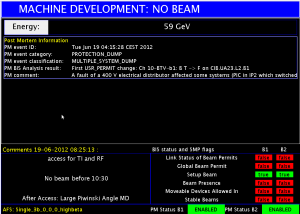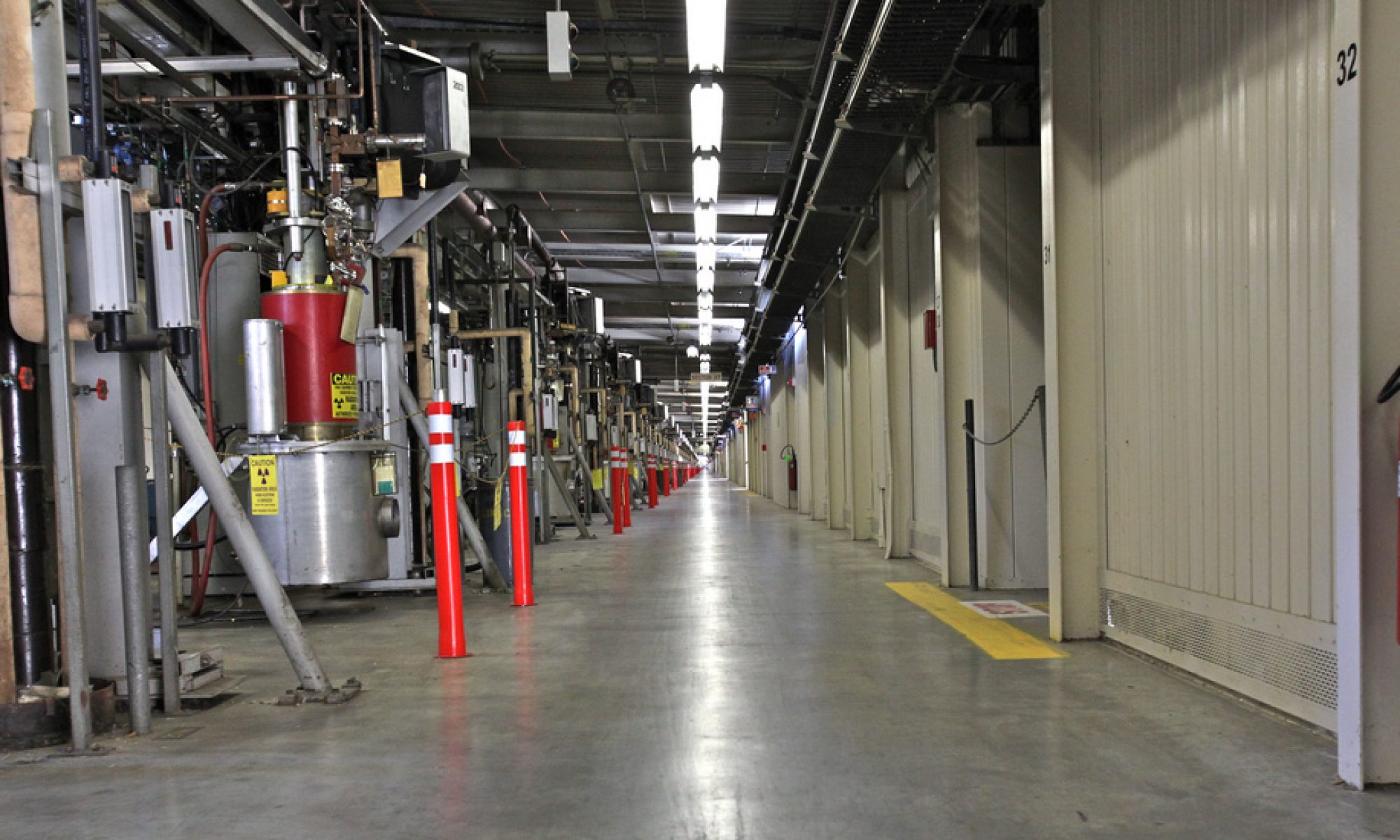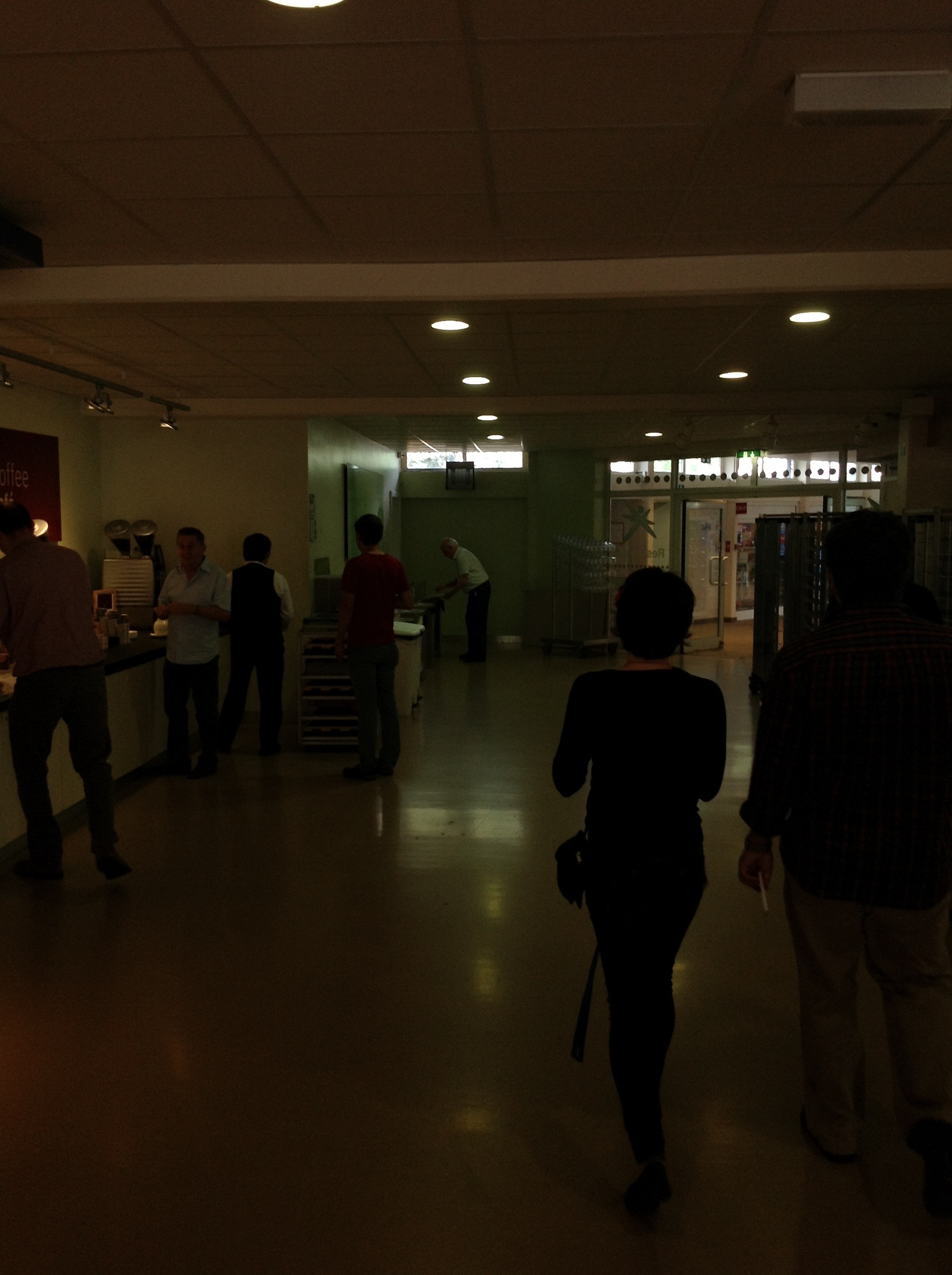Why, yes . . . That is Peter Higgs putting his tray away in CERN restaurant number 1.
CERN Seminar on ATLAS and CMS Results to “Raise the Curtain” for ICHEP

[This was originally posted by me last night in the SMU CERN blog, http://blog.smu.edu/smucern]
It is official: CERN has just announced that on July 4, 2012, at 09:00 CEST (02:00 US Central), there will be a seminar to “raise the curtain” on the results that ATLAS and CMS will show at the International Conference on High-Energy Physics (ICHEP) in Melbourne, Australia. The press release is here:
http://press.web.cern.ch/press/PressReleases/Releases2012/PR16.12E.html
While the event will not lend itself to “live viewing” at SMU, as the December seminar did, we’ll do our best to publish live information about the unveiling of results from ATLAS and CMS as they assess the existence of a Higgs Boson using the new data from the LHC. ICHEP will be an opportunity to go deep into these results, while I imagine that this seminar will be more “broad brush” with enough detail to explain the results from the new data.
Piwinski Angle

Today’s shift menu includes: Machine Development (MD)! This may sound exciting – no doubt, it is very exciting for the LHC machine physicists. For the shift crew of the ATLAS Experiment, it’s rather dull. There is no data to be taken; in fact, the ATLAS detector is operating in STANDBY mode.
A message popped up recently on the LHC Op Vistars page (the public-facing status page for the machine). It read: “After access: large Piwinski Angle MD.” I thought I might take a little time to revisit the Piwinski Angle, since I only learned about it a few years ago.
A decent paper to help us step into the subject is http://arxiv.org/abs/1201.5905. There, they list in Equation 2 the relationship between the instantaneous luminosity produced by two LHC-like proton beams in collision and the parameters of those beams; the beams are assumed to be round (in the plane, denoted “x-y”, transverse to their direction of travel, denoted “z”), Gaussian beams (this being their profile in a plan transverse to the x-y plane; x-z, for instance) with equal intensity. The beams may cross at a non-zero angle – the “crossing angle” – and in fact there are advantages to doing this. By increasing the crossing-angle, it is possible to increase the instantaneous luminosity.
There are, of course, limitations to increasing the crossing angle. One has to not only bring the beams into collision, but then bring them out of collision, transport them back into the accelerator, and re-focus them afterward. You have to trade off larger crossing angles with the physical limitations imposed by these constraints.
The Piwinski angle is a specific combination of the crossing angle and the bunch profile quantities – the cross-section of the beam in the plane transverse to the z-direction and along the z-direction. By increasing the profile along z, one can increase the chance of collisions by making the bunches pass through each other for a longer period of time. However, the bunches cannot be too long, or they will destabilize in the accelerator (bunch size is limited by, among other things, the structure of the radio-frequency waves inside the accelerator). One can “squeeze” the bunches in the x-y plane, compressing them and thus increasing the chance that protons will interact. The Piwinski Angle, given by θC σz/(2σzy), can be increased (in order to increase luminosity) by doing any of these changes, alone or in combination. Changing these properties of the beams can confer a benefit to intensity, but clearly need study as they also risk introducing instability. That trade-off between stability and intensity is a constant battle for any accelerator.
So today, the LHC will attempt to explore the scheme outlined in the paper I linked earlier. In order to achieve the long-term luminosity goals of the machine, they will explore the Large Piwinski Angle scenario.

